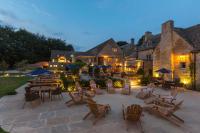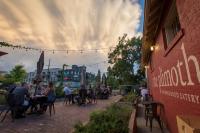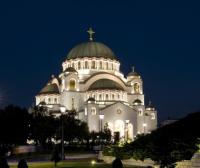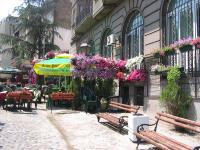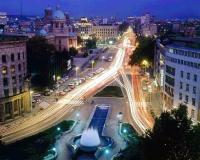Belgrade: travel & holiday
Belgrade is the capital city of Serbia and has a population of around 1.7 million. It is one of the oldest cities in Europe and has since ancient times been an important crossing of the ways where the roads of eastern and western Europe meet. The city lies on two international waterways, at the confluence of the Sava and Danube rivers, which surround it on three sides. Because of this position, Belgrade is fittingly referred to as the Gateway to the Balkans and the Door to Central Europe.
The oldest archaeological finds in this area date from the 5th millennium BC. The prehistoric site of Vinča, which preserves traces of a prehistoric human material culture (Neolithic plastic art), is located on the banks of the Danube. Celtic tribesmen founded Singidunum in the 3rd century BC, and the town is also mentioned in classical sources. The territory was later conquered by the Romans and became part of the Byzantine Empire when the Roman Empire split in 395.
The Slavs crossed the Danube in increasing numbers during the 6th century and permanently settled in this area, erecting their settlement – the White City (Beli Grad) – on a rocky outcrop rising above the mouth of the Sava. Between the 16th and the 19th centuries, Belgrade was called by many names in different languages: Alba Graeca, Alba Bulgarica, Bello grado, Nandor Alba, Griechisch Weissenburg and Castelbianco, all of which are translations of the Slavic word Beograd. The name Belgrade was mentioned for the first time in 878, and during its long and turbulent history the city has been occupied by 40 different armies and rebuilt from its ashes 38 times.
In 1403, Despot Stefan Lazarević took Belgrade from the Hungarians through skilful diplomatic manoeuvring and it became the Serbian capital for the first time. Belgrade was later ruled by the Turks, and the Austrians also attacked and conquered the city. In 1841, Belgrade became the capital of the Principality of Serbia. With the 20th century came the Balkan Wars and then the First and Second World Wars, during which Belgrade was destroyed and rebuilt again. In 1918, the city became the capital of the Kingdom of Serbs, Croats and Slovenes, the capital of the Kingdom of Yugoslavia in 1929, and in 1945, the capital of socialist Yugoslavia. In 2006, Belgrade once again became the capital of the independent state of Serbia
Belgrade’s average height above sea-level is 117 m, and the peaks of the Kosmaj (628 m) and Avala (511 m) mountains are in the surrounding area. Belgrade’s rivers have a total of 200 km of riverbank and 16 river islands, of which Ada Ciganlija and Great War Island (Veliko Ratno Ostrvo) are the largest. The inner, urban area of Belgrade covers an area of 36 km2 and the total territory of the city is around 322 km2. The wider city area is 419 km2.
For administrative purposes, Belgrade is divided into 17 city municipalities, of which 10 are urban municipalities (Čukarica, Novi Beograd, Palilula, Rakovica, Savski Venac, Stari Grad, Voždovac, Vračar, Zemun and Zvezdara) and 7 are suburban (Barajevo, Grocka, Lazarevac, Obrenovac, Mladenovac, Sopot and Surčin). Geographically, Belgrade comprises three areas: the Old Town (Stari Grad) on the right bank of the Sava and Danube, New Belgrade (Novi Beograd) on the left bank of the Sava, and Zemun on the banks of the Danube beyond New Belgrade. Plans are being laid for the land on the left bank of the Danube to become a ‘Third Belgrade’ during the 21st century.
Belgrade has a moderate continental climate, with an average temperature of 11.7oC. The Košava – a southeasterly and easterly wind which brings clear and dry weather in intervals of two to three days, mainly in autumn and winter – is characteristic to Belgrade.
Belgrade is an important regional traffic hub: the crossroads of European routes E70 and E75 and the crossroads of Pan-European Corridors 7 and 10 are located here, the city is connected to key railway routes, is home to Nikola Tesla International Airport and two international waterways flow through it. The city covers 3.6% of the territory of Serbia, 15.8% of the country’s population call it their home and 31.2% of the employed population work there. Belgrade is home to important trade, banking, agricultural and economic facilities, the most important being the metal, metal-processing and electronics industries, accounting for 30% of Serbia’s total gross domestic product (GDP).
Belgrade is the capital of Serbian culture, education and science. It is home to the highest concentration of nationally important science and art institutions: the Serbian Academy of Science and Art, founded in 1886 as the Serbian Royal Academy; the National Library of Serbia, founded in 1832; the National Museum, founded in 1841 and the National Theatre, founded in 1869. The city is also home to Belgrade University, founded in 1869 as the High School, as well as the Arts University.
Belgrade Fortress (Beogradska Tvrđava) is the oldest cultural and historical landmark in Belgrade. Also of interest to tourists are Skadarlija, the central bohemian quarter; the Residence of Princess Ljubica (Konak Kneginje Ljubice); Captain Miša’s Building (Kapetan Mišino Zdanje); the Old Palace and New Palace (Stari Dvor and Novi Dvor); the Serbian National Assembly building and the Cathedral of Saint Sava (Hram Svetog Save).
Numerous local and international theatre, film, music and other cultural events (FEST, BITEF, BEMUS, BELEF, October Salon and the Documentary and Short Film Festival) make Belgrade an important cultural centre.
Belgrade is also host to numerous national and international conferences and fairs. The multipurpose Sava Centre is one of the most attractive venues for conferences and cultural events in this part of Europe. Over 40 international fairs are held each year at the Belgrade Fair.
Numerous European and world sporting events have been held in Belgrade’s stadia and on its sports fields. Belgrade Arena is a multi-functional venue for all sporting, cultural and entertainment events and has a capacity of 20,000. There are outdoor facilities for many sports, particularly water and extreme sports, on Ada Ciganlija and the Belgrade Marathon is held in the city every year.
The formerly separate town of Zemun, which is today a municipality of the city of Belgrade, was settled in the 3rd century BC by a Celtic tribe known as the Scordisi who called it Taurunum. The highest point in Zemun is a hill known as Gardoš, from which a view extends over the whole of Zemun, the Danube and the centre of Belgrade. There is also the 36 m high Millennium Tower, otherwise known as the Tower of Sibinjanin Janko (Kula Sibinjanina Janka), built by the Hungarians in 1896. The area around Gardoš is distinctive, with its narrow cobbled streets and unusual architecture. At the foot of the hill, on the Zemun Quay, on the banks of the Danube, there are numerous restaurants offering live music, as well as cafés and clubs. It is also a popular place to walk and meeting-place for fishermen and artists with its marinas and galleries.
Last added destinations in Belgrade

Kalemegdan Fortress
Belgrade
The Kalemegdan Fortress At the confluence of the Sava and the Danube the Kalemegdan Fortress was constructed by the Serbian Despot Stefan Lazarevic in the XIV century and later on reconstructed by Austrians since 1717 on under the Vauban...

St. Sava Kathedraal
Belgrade
The Cathedral of Saint Sava is an Orthodox church in Belgrade, Serbia, the largest Orthodox cathedral on the Balkans, and one of the largest Orthodox cathedrals in the world. The church is dedicated to Saint Sava, founder of the Serbian Orthodox...

Royal
Belgrade
The ROYAL hotel is one of the oldest hotels in Belgrade. The hotel was built during the last century (1885) and was named “ROYAL”. The hotel changed its name to “Toplice” in the year of 1953 but in the year of 2001 the hotel restored its...

Townhouse
Belgrade
TOWNHOUSE 27 is the first authentic boutique hotel in Belgrade, Serbia. Our concept was to combine impeccable service with modern architecture and minimalist interior design that exude a mix of cosmopolitan and cosy ambiance. Soothing colour...

Union Hotel
Belgrade
The hotel UNION was built in 1922 with architectural features typical for buildings of the beginning of the XX century. It is categorized as a three-star hotel. The hotel UNION is situated in the very heart of the business and cultural center of...

Palace Hotel
Belgrade
The hotel is situated in the central part of Belgrade, 200m away from Knez Mihajlova, the main shopping street, and near Kalemegdan - Belgrade's medieval fortress and park. There is a wonderful view from the Belgrade Panorama restaurant onto the...

Skadarlija
Belgrade
Below Stari grad, wedged between the descending avenues Francuska and Makedonska, third street paved in an ancient way is an attraction not to be missed. Since Gipsy have put their painting ateliers and their cabarets in XIX century its reputation...

De Oude Stad
Belgrade
Between the fortress of Kalemegdan and the Square of the Republic, the walking street Knez Mihailova cuts a furrow on one of the town heights. According to the first urbanity plan from 1866, the greatest Serbian have there established their...

Hotel Balkan
Belgrade
Hotel Balkan is an oasis of peace and cosiness, placed amidst the boiling energy and tumultous life of Belgrade center, daily visited by thousands of people, and is an ideal basis for businessmen as well as for leasure travellers. It is in the...
Most visited destinations in Belgrade
Curiosities on Vracar.
Hotels on Kralja Petra I 56.
Hotels on 27, Maršala Birjuzova 56.
Curiosities on Stari Grad.
Hotels on Prizrenska 2.
Hotels on Kosovska 11.
Hotels on Toplicin Venac 23.
Curiosities
Curiosities










